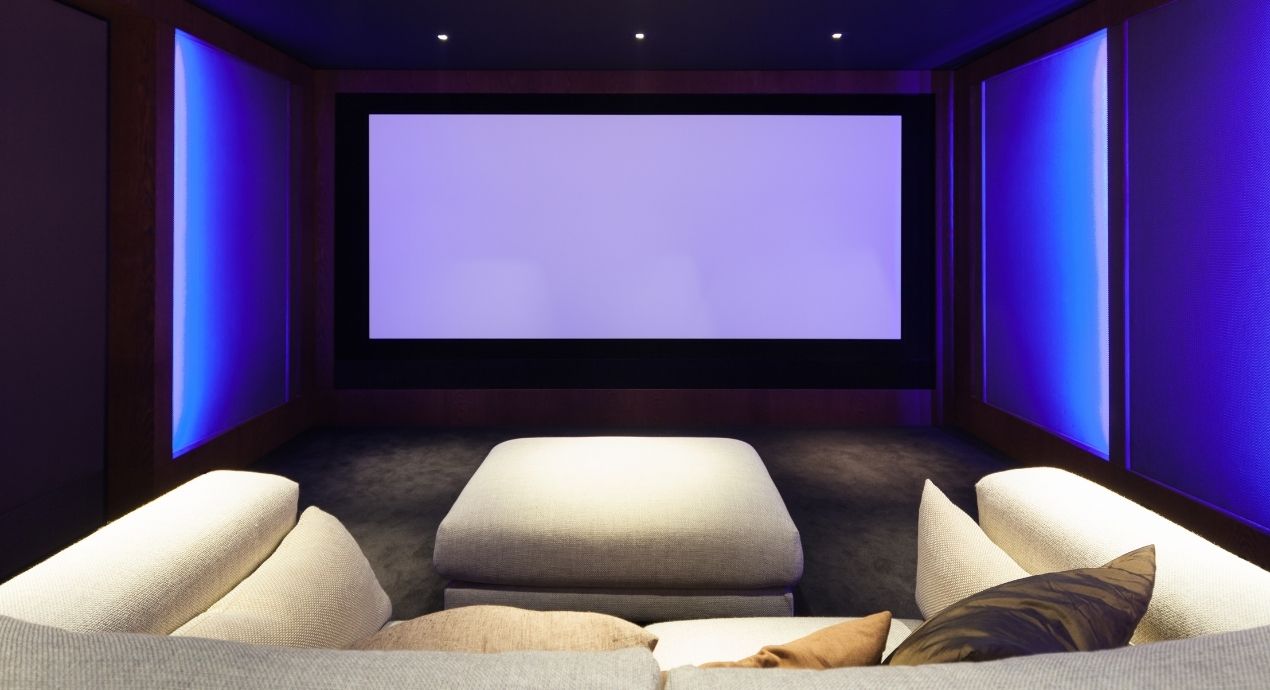
Contemplating coverage?
Subscribe to receive our emails & get
$200 OFF!
Have questions?
Call us: (833) 544-8273


Written By Erin Easley
Home theaters are fantastic luxuries, but the interconnected system of receivers, amplifiers, cables, speakers, and source devices make them prone to nagging problems.
In this article, we'll review seven of the most common problems that arise with home theaters. We'll also share home theater troubleshooting tips so you can get things back up and running in no time.
A dark screen could have several possible causes. It could be the screen or projector, cables, source device, receiver, or remote. Take measured steps to rule out each link in the chain.
If the screen is totally dark, there could be a power issue or malfunction with your television or projector. It could also be that the remote is dead or the remote's signal isn't reaching the necessary sensor. If you can manually turn on your projector or television, the problem is probably the remote or a faulty or detached sensor. Otherwise, check your power cables and power sources.
If your screen powers on but doesn't receive a signal, the problem is somewhere else in the chain. Cycle through different inputs. Test multiple source devices, such as your cable box and a gaming console. Confirm your cables are securely connected. If you can't narrow down the source of the issue, home theater system repair from an A/V technician may be necessary.
If your universal remote isn't responding to inputs, first check that it's sufficiently charged or doesn't need a replacement battery.
If the remote continues to be nonresponsive, there could be signal interference. Ensure nothing is obscuring the remote's signal, such as a cabinet door. Some home theater setups use infrared (IR) or radio frequency (RF) sensors (or “eyes”) that are applied over the built-in sensors on the receiver and other devices. The adhesive on these eyes can wear off, which can cause a signal break—the remote is speaking to the eye, but the signal isn't reaching the necessary sensor on the receiver.
If the above doesn't apply to your home theater setup, it could be that your remote is using IR when your receiver is set to RF, or vice versa. You can usually adjust the setting on the remote or the receiver to make them match.
One of the most common surround sound problems is a total absence of sound. This usually doesn't require complicated home theater sound repair.
Check that your sound cables are securely plugged in and that all devices are powered on. Check the volume and mute controls on your receiver. If you're still having trouble, use the receiver to test and recalibrate the speakers. Continued absence of sound may require a new speaker, receiver, or professional home entertainment system repair.
You don't need to be a professional to know how to repair sound system balancing. If some speakers are working but not others, check the cable connections behind your speakers and receiver. You may also have to adjust the settings on the receiver itself.
If all speakers are working but the balance feels off, use your receiver to recalibrate. Your user's manual should have detailed information on how to accomplish this.
Audio that is out of sync is maddening. It's a particular problem with home theater setups because of the network of devices and cables. With more links in the chain, there can be some lag in the picture signal.
Fix surround sound system audio delay by adjusting the audio delay setting on your television or receiver. An adjustment of a few milliseconds is usually all that is necessary. Again, use your user's manual for detailed instructions.
Tinny or thin-sounding audio is usually because the treble is set too high. Booming audio that shakes the room is a result of too much bass. Use you receiver to equalize the audio to your preference.
If you're using a projector for video, even a small tweak to the mounted projector can make the picture appear crooked or off-center. Use the fine-tuning adjustment knobs on your projector to recalibrate the picture. Most projectors have a calibration menu or program to assist you with the process. Remember that you'll need to adjust laterally, vertically, and angularly.
Sometimes your home theater problems call for professional help. Perhaps you can't determine the source of your video or audio issue, or a device in the system needs to be repaired or replaced.
Fortunately, that professional help doesn't have to break the bank. A home electronics warranty from Liberty Home Guard can protect your home theater and save you money when repairs are necessary.
Explore our plans by contacting our team at (866)-225-7958.
Stay Ahead of Potential
Home Mishaps!
Subscribe to our Liberty Home Guard Newsletter and gain access to exclusive content that ensures your peace of mind.